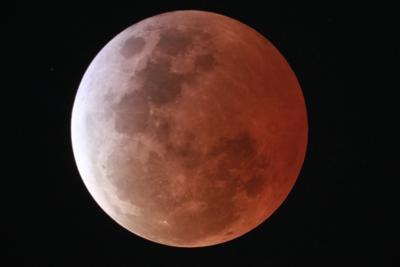Early morning on Friday, March 14, skywatchers across North and South America had the rare opportunity to witness a total lunar eclipse, an astronomical event visible from coast to coast. In partnership with Southern Illinois University Carbondale, the Adler Planetarium hosted a special edition of its popular YouTube show Sky Observers Hangout, offering live commentary and expert insight throughout the event.
The broadcast featured Adler's astronomy educators, Michelle and Hunter, who explained the science behind lunar eclipses, answered viewers' questions, and offered valuable tips on observing the event from home. The show kicked off at 12:05 am CDT on March 14, just as the lunar eclipse began to unfold.
For the Central Time Zone, the timing of the eclipse was as follows:
Penumbral Eclipse Began: 10:57 p.m. CDT, March 13
Partial Eclipse Began: 12:09 a.m. CDT, March 14
Total Eclipse Began: 1:26 a.m. CDT, March 14
Total Eclipse Ended: 2:31 a.m. CDT, March 14
Partial Eclipse Ended: 3:47 a.m. CDT, March 14
Penumbral Eclipse Ended: 5:00 a.m. CDT, March 14
According to the Adler Planetarium, during an eclipse, the Moon passes through the Earth's shadow in several phases, beginning with the penumbral eclipse, where the Moon moves into the lighter outer shadow of the Earth, creating a subtle darkening of its surface. As the Moon enters the darker, inner part of the shadow, known as the umbra, the Moon will start to show a "bite" taken out of it. The umbra is the central, darkest part of Earth's shadow, where sunlight is completely blocked. As the Moon moves further into the umbra, the darkened area will increase until the total eclipse, or totality, begins.
The total eclipse, or totality, is when the moon is fully within the umbra, the darker, inner part of the shadow, and it takes on a striking reddish hue. This phenomenon occurs because sunlight passing through the Earth’s atmosphere scatters the blue wavelengths, leaving only the red and orange hues, similar to the colors seen during a sunset, according to Adler Planetarium.
Adler Planetarium’s Sky Observers Hangout offered viewers a front-row seat to this celestial spectacle. Michelle and Hunter guided watchers through the event, explaining what was happening at each stage and offering insights into the natural wonders of lunar eclipses.
For more information about the eclipse, visit the Adler Planetarium's website.








(0) comments
Welcome to the discussion.
Log In
Keep it Clean. Please avoid obscene, vulgar, lewd, racist or sexually-oriented language.
PLEASE TURN OFF YOUR CAPS LOCK.
Don't Threaten. Threats of harming another person will not be tolerated.
Be Truthful. Don't knowingly lie about anyone or anything.
Be Nice. No racism, sexism or any sort of -ism that is degrading to another person.
Be Proactive. Use the 'Report' link on each comment to let us know of abusive posts.
Share with Us. We'd love to hear eyewitness accounts, the history behind an article.